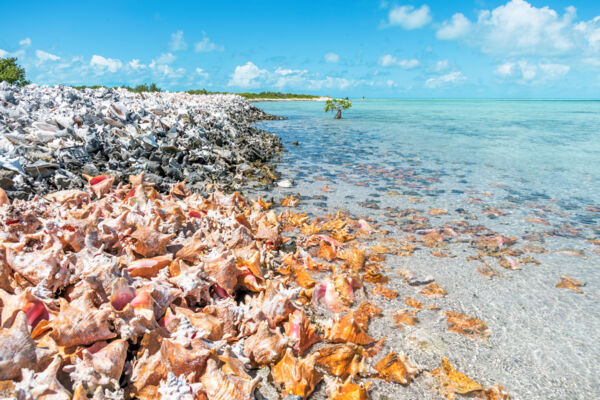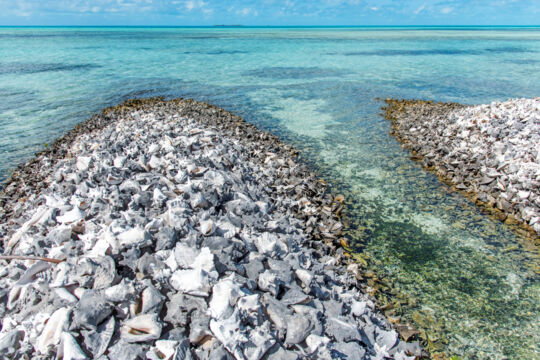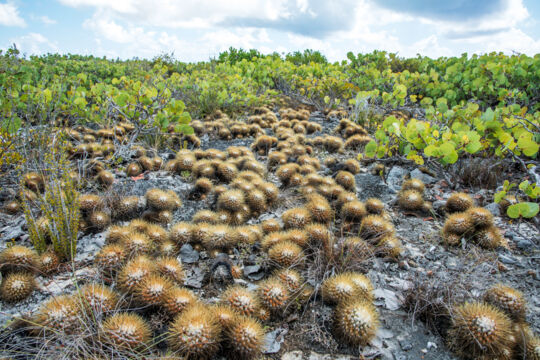Middleton Cay Turks and Caicos

Middleton Cay is a small yet interesting uninhabited cay, located in the shallow waters of the Caicos Banks between South Caicos, Long Cay, and Six Hills Cay. The cay is located about 2.5 miles (4 km) from South Caicos, and has a total landmass of about 12 acres (4.9 hectares). Middleton Cay is part of the Admiral Cockburn Land and Sea National Park.
Much of the cay supports low coastal vegetation. A few red mangrove stands are located on the southern and northern ends of the cay. A small beach lines the south-western coast.
Close to the southeast of Middleton Cay is the small shoal and sandbar of Conch Cay, which shouldn’t be confused with the larger Conch Cay located between North Caicos and Middle Caicos.
The Conch Piles
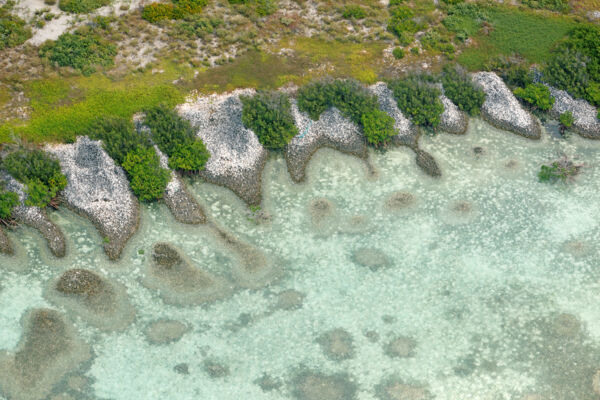
The most striking feature on Middleton Cay are the many large piles of discarded queen conch shells, representing centuries of work by fishermen. Apparent are conchs left by modern fishermen, which make up the majority of the shells, yet many conchs left by the pre-Columbian Lucayans can still be seen. The modern and semi-modern conch can be differentiated from the prehistoric conchs by the ‘knocked’ opening on the shell. Modern shells exhibit a longer slot, typically inflicted by a metal hammer. Pre-Columbian shells typically have a single round hole, which may have been knocked in with the spire point of another conch shell, or by an imported hard stone ‘celt’ ax head, many of which had a pointed end. The openings broken into the shell allowed the animal to be removed.
The large piles of conch shells reach heights of more than 6 feet (2 m).
Lucayan Settlement
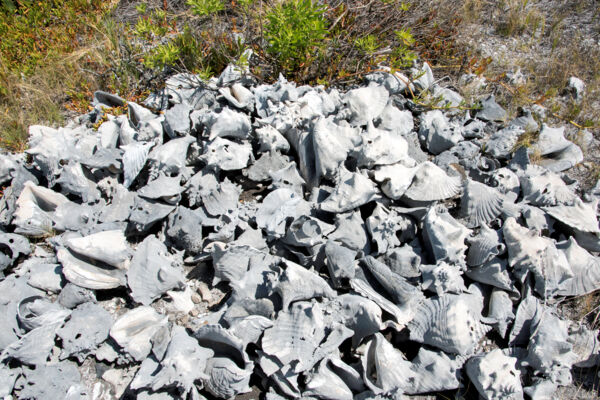
Prior to the arrival of Columbus in the New World, Middleton Cay was seasonally inhabited by the Lucayan peoples, likely between the years of 1100 AD and 1400 AD. It’s not known what the primary purpose of the settlement was as the cay is quite small, yet it was likely used as a base for fishing or as a place to escape mosquitos during mosquito blooms after heavy rains. Large numbers of discarded conch shells left by the Lucayans can still be seen at many spots on the island, with some of the shells being embedded in lithified rock on the western side of the cay.
Archeological work conducted on the cay by the University of Florida suggested that relatively large scale shell bead production took place on the cay, something that hasn’t been commonly seen elsewhere in the Turks and Caicos. It unknown why this bead making took place on the cay, yet the two above theories on why the cay was inhabited would suggest that the Lucayans may have had ample time to spend on a cay that was very small, not suitable for agriculture, and quite a distance from other larger islands. Creating beads for regional trade may have been a useful way to spend the time.

